AWS Certified SysOps Administrator - Associate
Domain 5 Networking and Content Delivery
VPN Direct Connect Peering and VPC Endpoints Common Issues
In this lesson, we review common networking issues encountered with VPNs, Direct Connect, VPC peering, and VPC endpoints, along with their recommended solutions. The following sections provide detailed explanations and diagrams to help you better understand these challenges and how to mitigate them.
VPN Connectivity Issues
VPNs are a popular solution for connecting over the public internet. However, they come with several limitations:
Latency and Performance Issues
Since VPNs operate over the public internet, increased latency and decreased performance are common.
Solution: Use Direct Connect to bypass the public internet and improve performance.Limited Bandwidth
Bandwidth constraints can affect overall throughput.
Solution: Leverage Direct Connect to secure dedicated bandwidth.Complex Configuration
While efforts have been made to simplify site-to-site VPN configurations, they can still be complex.
Solution: Consider transitioning to Direct Connect and ensure encryption is enabled. Note that Direct Connect is not encrypted by default. Alternatively, run a VPN over Direct Connect for enhanced security.Downtime and Reliability
Relying on public internet connectivity may lead to occasional reliability challenges.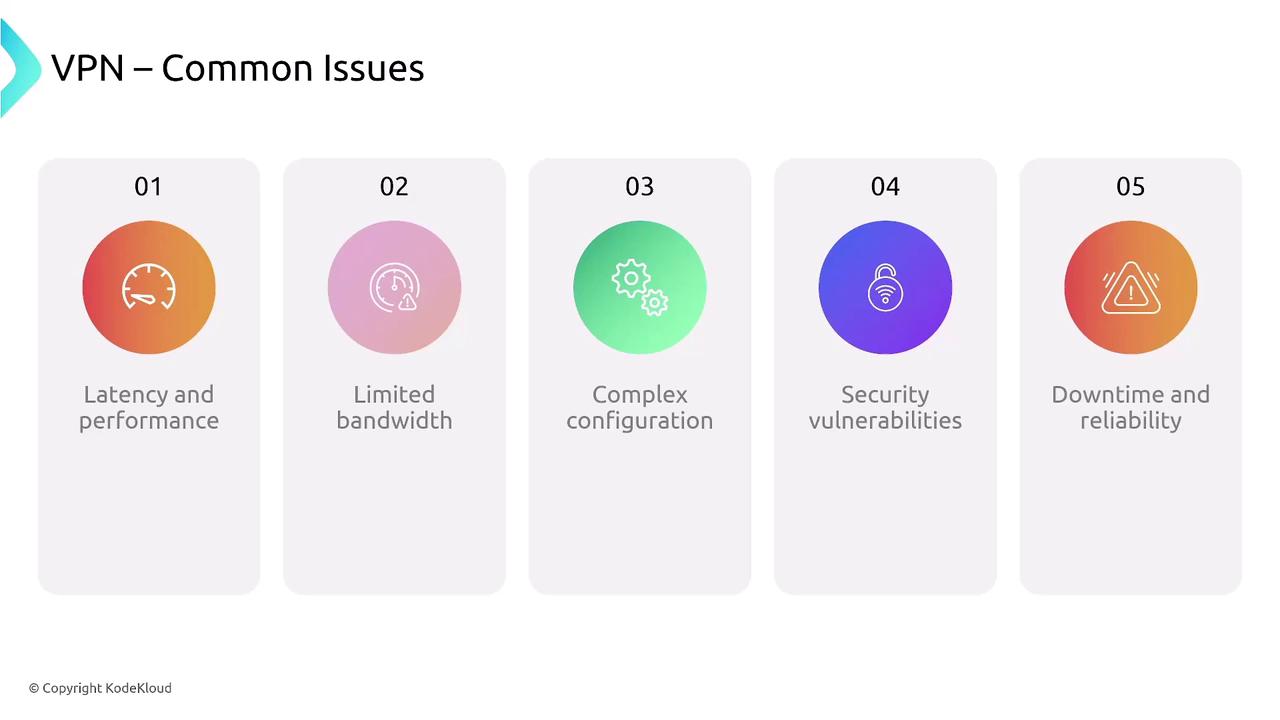
Note
Although VPNs utilize IPSec encryption for security, transmitting traffic over the public internet can expose you to vulnerabilities, especially as encryption methods continue to evolve.
Direct Connect Considerations
Direct Connect offers a dedicated connection from your data center to AWS, compared to public internet-based VPNs. However, there are some challenges to consider:
Higher Initial Cost
Setting up Direct Connect often requires a dedicated line in a co-located facility, additional networking hardware, and sometimes long-term contracts.
Solution: Start with a VPN-based solution as a backup and then transition to Direct Connect for high-volume data transfer. Keep in mind that data egress over Direct Connect may be more cost-effective than using the public internet.Limited Availability and Setup Time
Direct Connect is not available in every location and can take weeks to set up due to the physical installation of cables. Scaling up with another connection is also more time-consuming compared to the flexible nature of VPNs.Single Point of Failure
Relying on a single Direct Connect connection may create redundancy issues.
Solution: Consider provisioning a backup connection or pairing Direct Connect with a VPN for improved redundancy.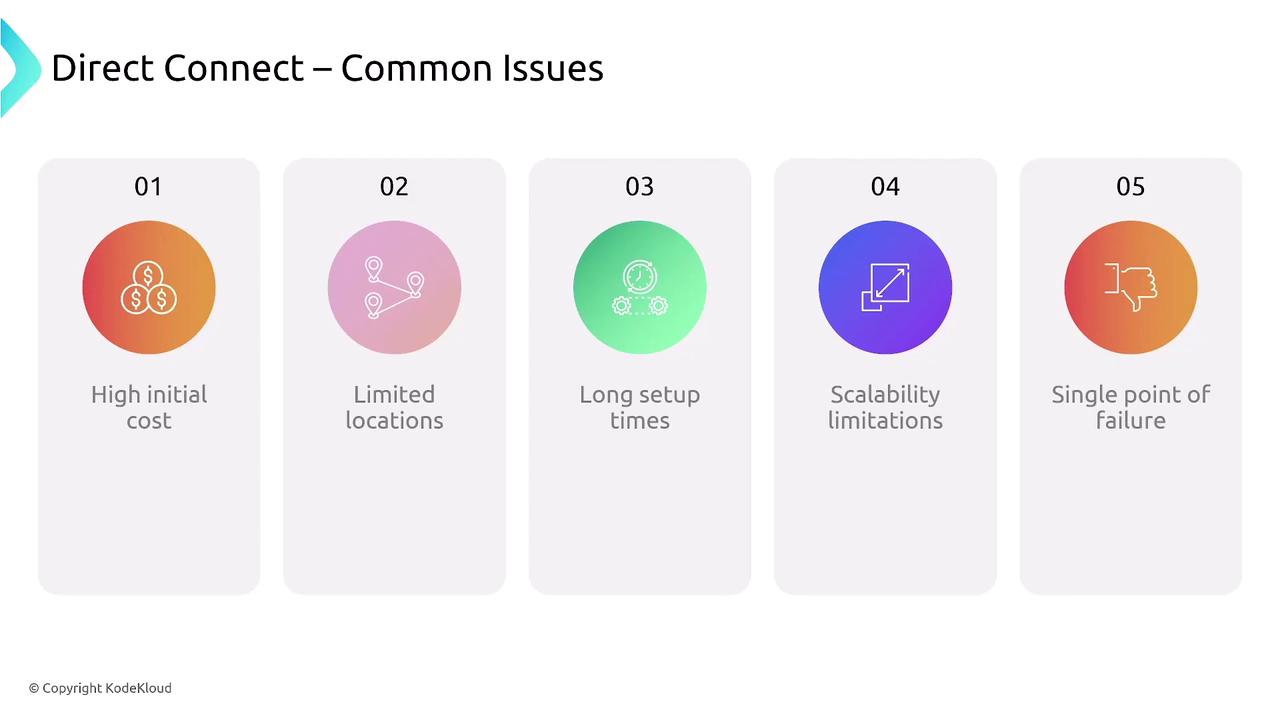
Warning
Always plan for failover strategies when using Direct Connect to avoid a single point of failure.
VPC Peering Challenges
VPC peering facilitates connectivity between Virtual Private Clouds, but it comes with several challenges:
Route Table Complexity
Managing multiple peering connections can complicate route table configurations.
Solution: Employ a Transit Gateway to centralize routing and simplify network management across several VPCs.Lack of Transitive Peering
Even if VPC A is peered with VPC B and VPC B with VPC C, VPC A cannot automatically communicate with VPC C.
Solution: Utilize a Transit Gateway to enable transitive connectivity if needed.Scaling and Bandwidth Limitations
While traffic limitations are generally tied to EC2 instance performance, managing numerous peering connections can be challenging. Note that peering within the same region is free, whereas inter-region peering can incur additional data transfer costs.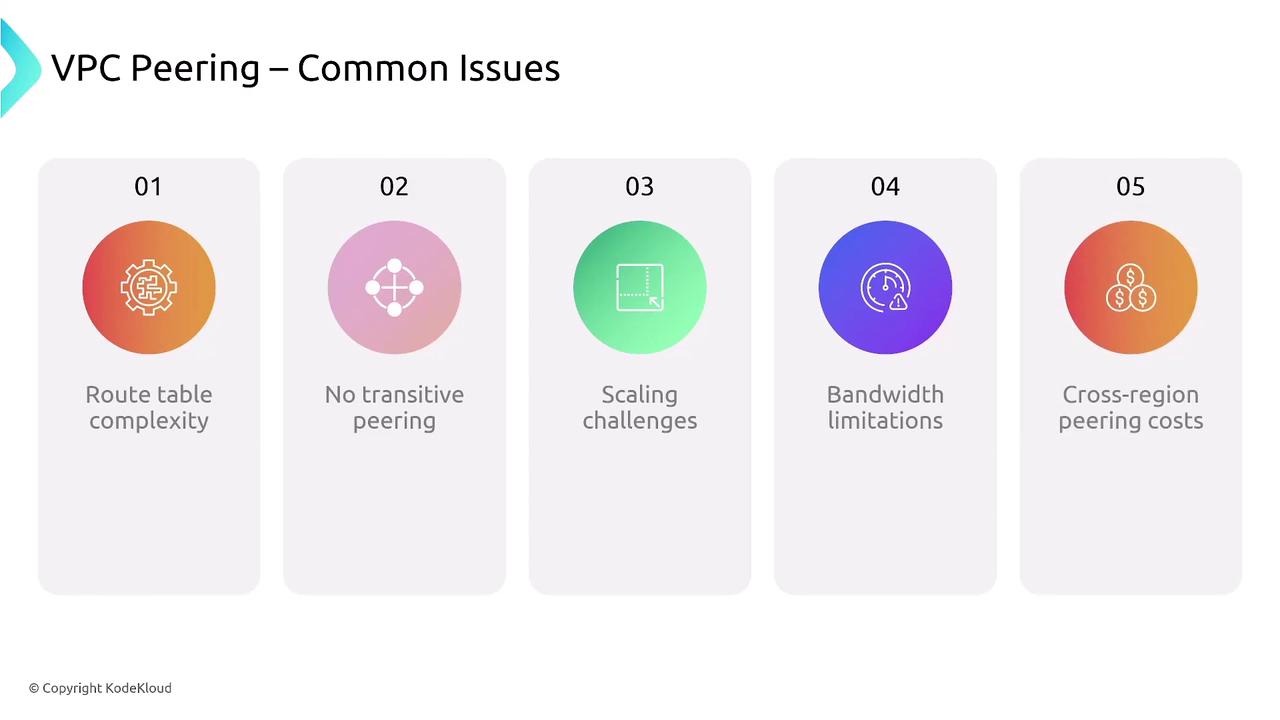
VPC Endpoint Issues
VPC endpoints let you privately connect to AWS services without using the public internet. Be aware of the following limitations:
Limited Service Support
Gateway endpoints only support a limited set of AWS services, while interface endpoints cover more services—but still not all are available.Misconfiguration of Private DNS
Incorrect DNS settings can result in connectivity issues. Always confirm that your DNS and routing tables are correctly configured.Cost Overhead
With heavy usage, charges on interface endpoints (calculated per gigabyte) can add up. Although scaling limitations are rare, careful planning is recommended.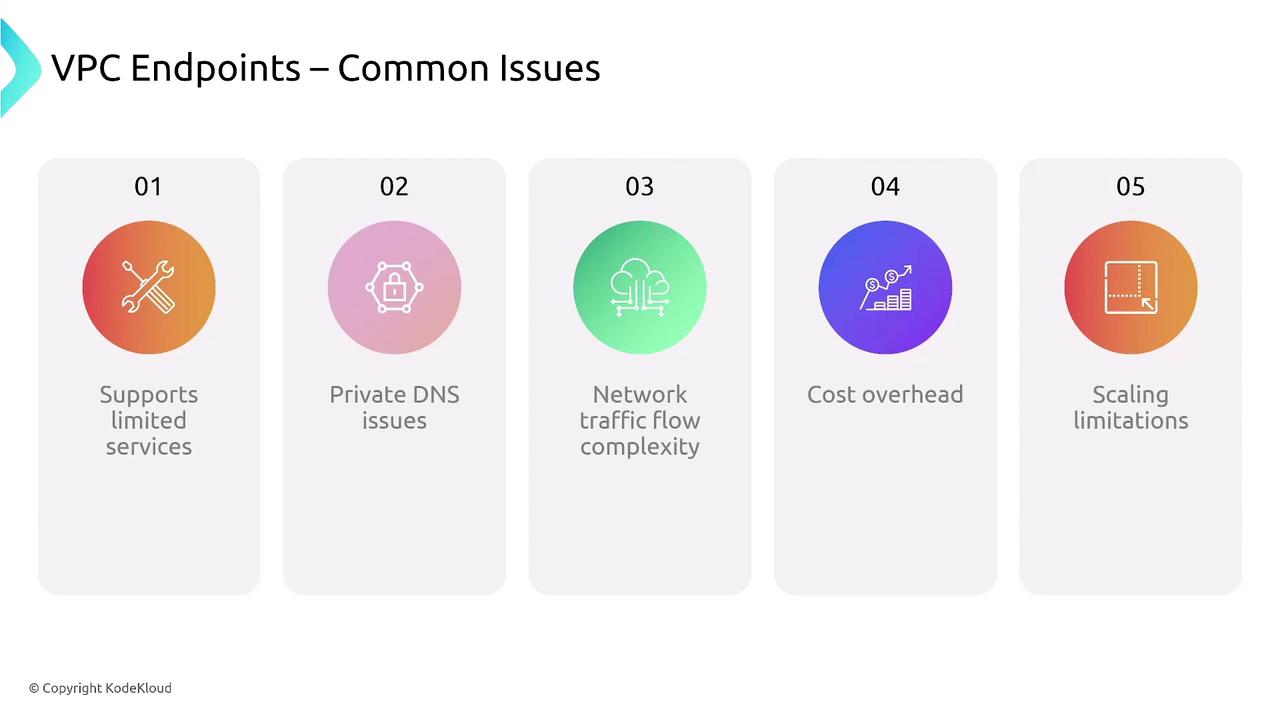
An additional diagram highlights private DNS issues with VPC endpoints:
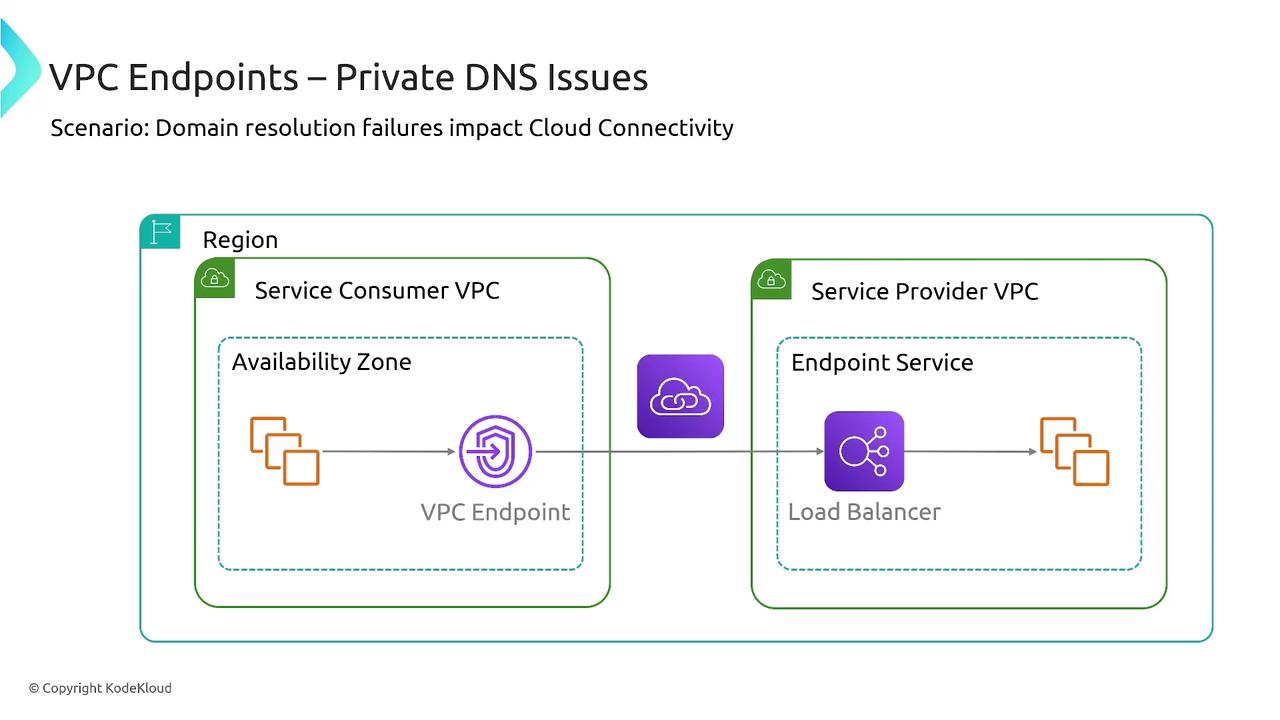
Summary and Recommendations
Below is a summary of the common issues along with their recommended solutions:
| Component | Common Issues | Recommended Solution |
|---|---|---|
| VPN | Latency, limited bandwidth, complex configurations, downtime | Use Direct Connect for improved performance and/or run a VPN over Direct Connect with encryption enabled. |
| Direct Connect | High initial cost, limited locations, long setup time, single point of failure | Consider a backup connection or pair with a VPN for redundancy and plan for scalability. |
| VPC Peering | Complex route tables, lack of transitive connectivity, scaling challenges | Use a Transit Gateway for simplified, centralized routing. |
| VPC Endpoints | Limited service support, DNS misconfigurations, potential cost overhead | Ensure proper DNS/routing configurations and monitor usage costs for interface endpoints. |
For enhanced security in your AWS environment, it is recommended to enable MFA, segment networks, and adopt zero-trust principles.
Visualizing the Transit Gateway
For organizations with complex environments that connect multiple VPCs (e.g., Inventory, Finance, and E-Commerce), using a Transit Gateway can significantly simplify network routing management. This approach reduces configuration complexity and improves security overall:
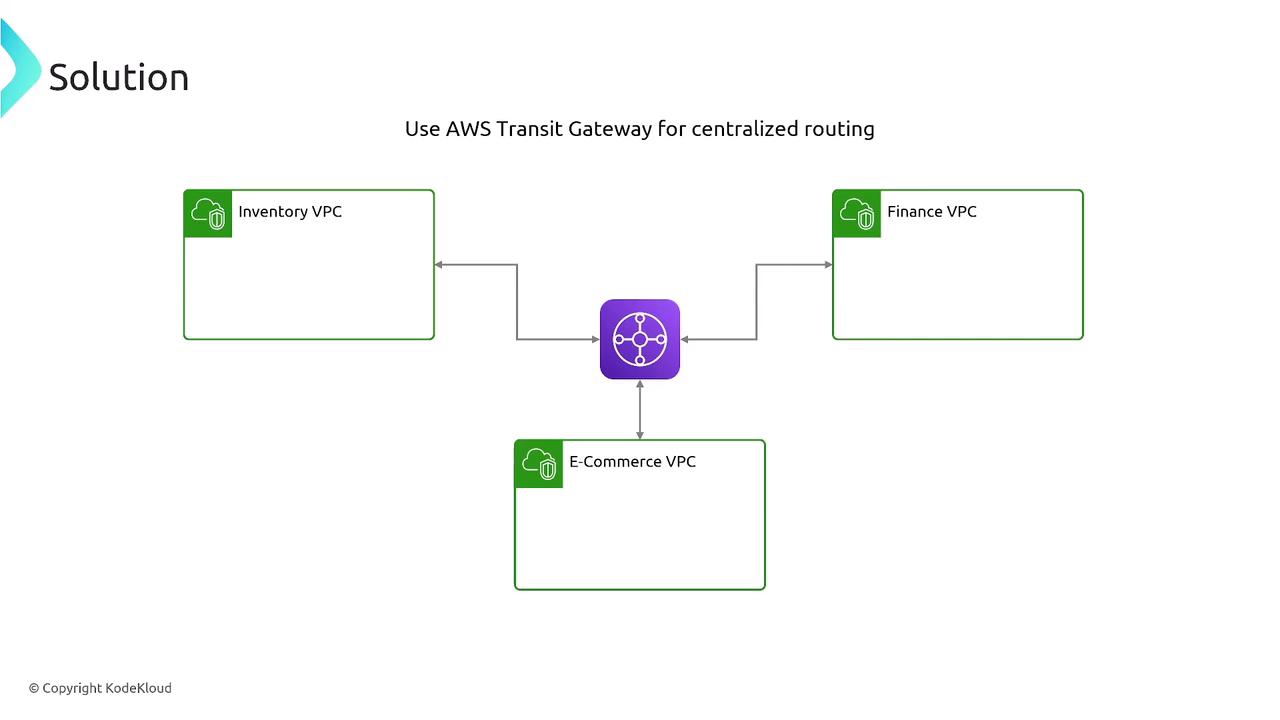
The diagram clearly demonstrates how a Transit Gateway improves upon direct VPC peering by centralizing routing, especially in environments with multiple interconnections.
Keep these considerations in mind while designing and managing your AWS networking infrastructure. A thorough understanding of the challenges and solutions discussed in this guide will help you better prepare for exam scenarios and enhance your overall cloud network architecture.
Catch you in the next lesson.
Watch Video
Watch video content